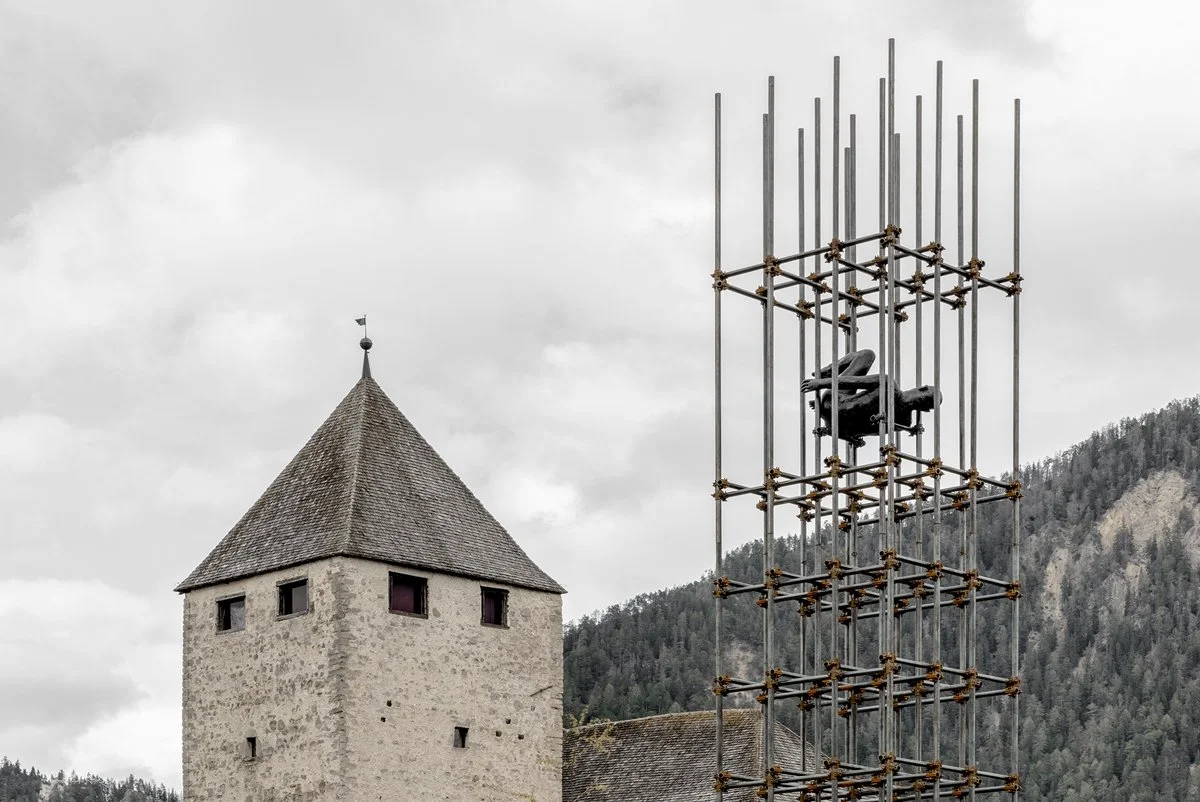Tor
Lois Anvidalfarei
The large tower (tor in Ladin) houses inside it the sculpture “Falling”: a body suspended in a structure made of scaffolding tubes. The bronze figure is one of six created in 2013 by the artist for the “Conditio Humana” cycle. As the title of the series suggests, the work depicts existence balanced between physical strength, containment, endurance, and collapse.
“The human being within his transience.
Although life is temporary and fallible,
the aspiration towards its perfection
is the origin of a noble principle.“
This new artistic and architectural element visually references the main body tower of the museum housed in the medieval Ciastel de Tor. Additionally, “Tor (Fallender)” relates to the natural landscape by entering into a close dialogue with it and ideally introducing the SMACH Val dl’Ert, whose path begins nearby and leads to the discovery of over twenty artworks installed among woods and clearings.







Exhibit place Ciastel de Tor
Studies have dated San Martin de Tor back to Roman times. A number of paths and locations found in what is now the town centre can be traced back to the practice of subdividing land into quadrilateral lots, which was typical of the era. Also, it is believed that the word "quadra" (square in Italian), which was initially used as a term for a surface, was extended to the whole of the Badia valley (Gadertal in German). It was only later that the term "Gader" originally "Kaidra" – “Square”. was introduced. Today, the castle, which dates from the early 13th century, houses the "Museum Ladin".
The project is supported by the PAC 2021 - Plan for Contemporary Art, promoted by the General Directorate for Contemporary Creativity of the Ministry of Culture.








